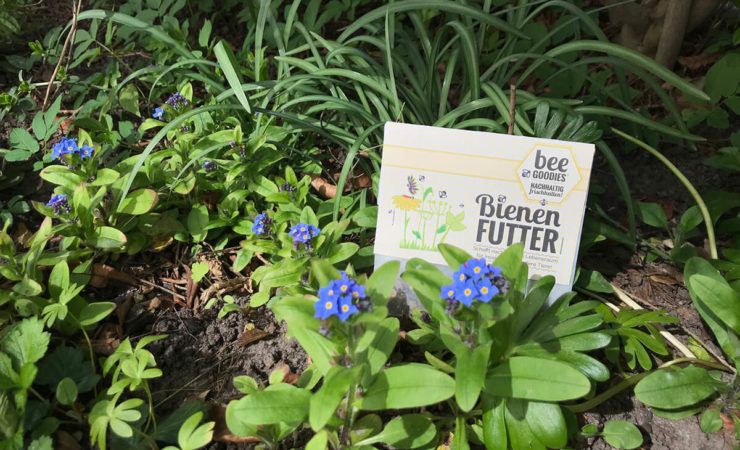What can we do right now despite Covid-19-crisis?
Maike and I have thought about starting a blog for you now, in which we report not only about our products but also about sustainable and interesting topics. In these times we all have to stick together, so at the moment you get a little bag of bee food for free with all online orders.
To ensure that the busy bees find enough food, pollen and nectar, throughout the year, you should always make sure to plant early bloomers as well as summer and autumn flowers in your own garden. But also the wild flowers along the wayside or in “urban gardening areas” on the traffic island in front of your door can help.
Our bee food is only a small contribution, but if everyone joins, we can achieve a lot:
- Let a wildflower corner grow in your garden
- Do not directly mow flowering clover in the lawn
- Also plant the roadside or the traffic island in front of your door
- Spread flower seeds when going for a walk
- Throw seed bombs in the neighbour’s garden – no, please don’t take it too seriously
- Gather seeds of faded flowers and spread them again next year, this works very well with hollyhock seeds for example. They only need a protected corner or sunny wall
At the beginning of spring the bees wake up from their 6-month hibernation at over 12 degrees and fly out for the first time. Now they need a lot of strength from flower pollen, because the bee colony expects a big development thrust. Due to the high laying performance of the queen with up to 1500 eggs per day, the colony grows strongly within a very short time and begins to build new combs.
Often a colony of bees then also divides itself and one of the colonies swarms out.
A summer bee lives about 42 days. A worker bee, which is born in autumn, survives the winter, so it has a lifetime of up to 6 months.
Every day the summer bees swarm out and collect the most important things for the survival of their colony in a radius of about 3 km from their hive: nectar, pollen and water. Up to 2000 flowers per day are pollinated by one bee.
The wax excretion of the bees serves the honeycomb construction, in which the eggs develop into bees – to put it simply.
A wax platelet (secreted by a bee) weighs only 0.00008 g. One kilogram of beeswax requires the entire work of about 150,000 bees. Amazing, isn’t it?
Bees have a natural building instinct, so they tend to build too many combs. Some of these combs are no longer needed, either because they have melted in the sun and can therefore no longer be used for the breeding of bees, or because they were created in the wild and are therefore simply “over”. For reasons of honeycomb hygiene, beekeepers remove these combs. They are cleaned and then used, for example, to produce our beeGoodies beeswax cloths.
Order the beeGoodies test cloth free of charge NOW
You can now order an approx. 24 x 24 cm large cloth for testing free of charge. Write us an email via this link with your address and the note beeGoodies Testtuch bestellen.
The production of new beeswax by the bees costs a lot of energy. It is estimated that they need 6-8 kg honey to produce one kilo of wax.
So help to provide the bees with enough food!
If you liked this blog entry, you can also subscribe to our YouTube channel. Click here to view existing posts.





